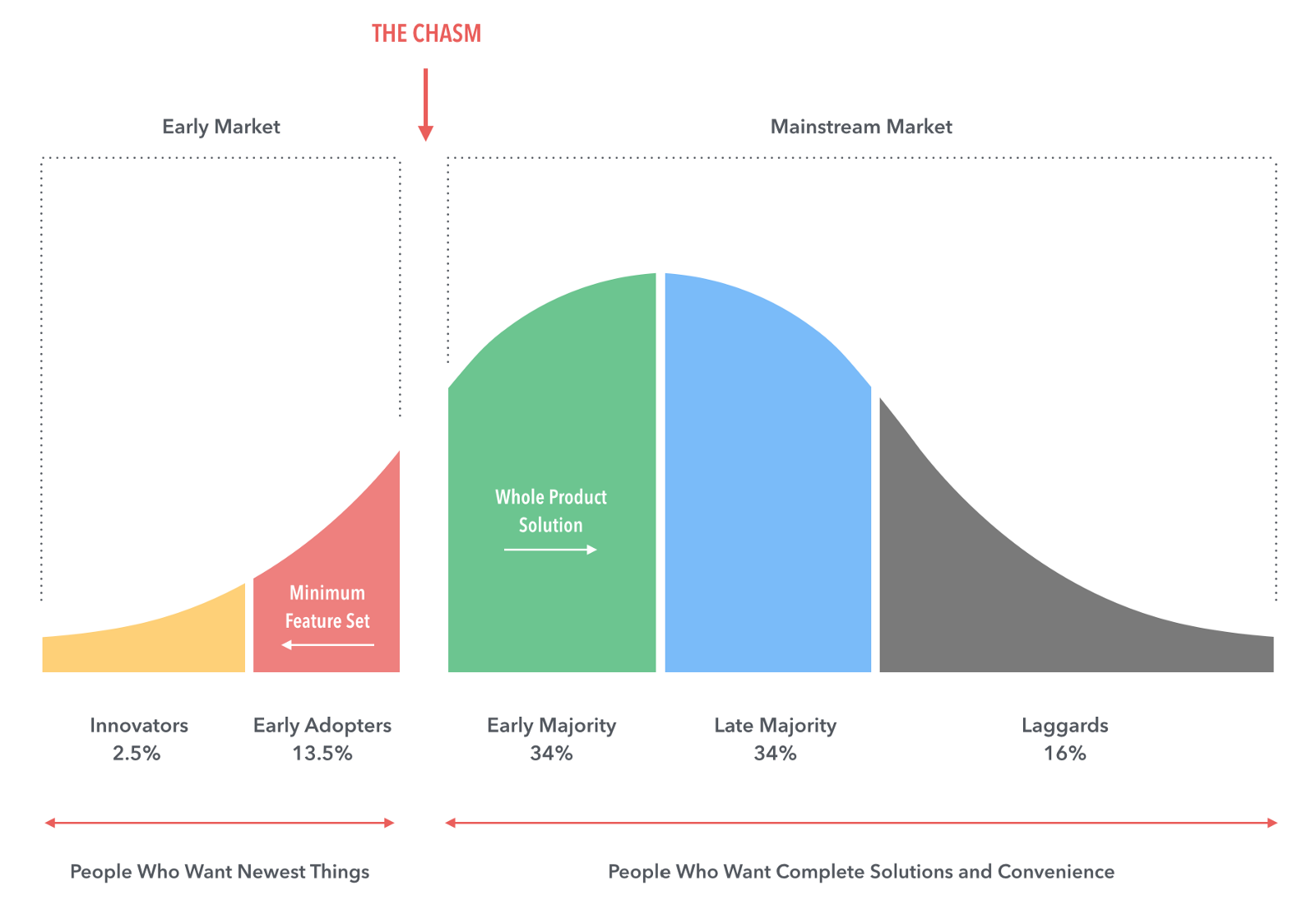
Imagine the entire timeline of an innovation. In the beginning, only a few people had heard of and used a new solution. These customers are called the Early Market (the gadget geeks standing in line for the first simple and unproven iPhone). Eventually, the product is used by a much broader population called the Mainstream Market (everyone else who was not in line waiting to buy the non-road-tested iPhone v1).

Technology Adoption Life Cycle - Smith House Design
In this early stage of company building, we are focused on identifying, learning about, and designing for a specific customer segment within the Early Market category, called the Early Adopter. The early adopter is the customer segment that experiences the pain point and will be able and willing to buy your solution.
Looking at the Technology Adoption Life Cycle graph, you might ask, "Why don't we focus on the innovators if they're willing to be your first customer?" First, they're a very small group. Second, they like to try new products whether or not they need them, which could give you a false positive on your market opportunity. Early adopters, by definition, are looking for new and better solutions to their unsolved pain points.
What about the early majority - they're a much bigger group? While the early majority is a third of the market, they tend to be pickier than early adopters. They want to know their product will be of good quality (i.e., minimal bugs). They prefer having the complete solution as opposed to piecemeal. Moreover, convenience is essential to them.
Geoffrey Moore speaks to the challenges that many new technology companies encounter when trying to transition from focusing on the early adopters to the early majority in his book Crossing the Chasm (video). As Moore explains, in future stages of company building, when it comes time to target your early majority, this group of people will be slightly different from the early adopters you have been serving. Thus, you will need to position, market, and price your product differently.
We have been using the term customer to encompass all people affected by the problem. For the sake of clarity, we've fleshed out customer-relevant terminology below. In this phase of company-building, we don't know who will use or buy our product and will continue to use the customer as an umbrella term that includes all potential paying customers, non-paying users, and stakeholders.